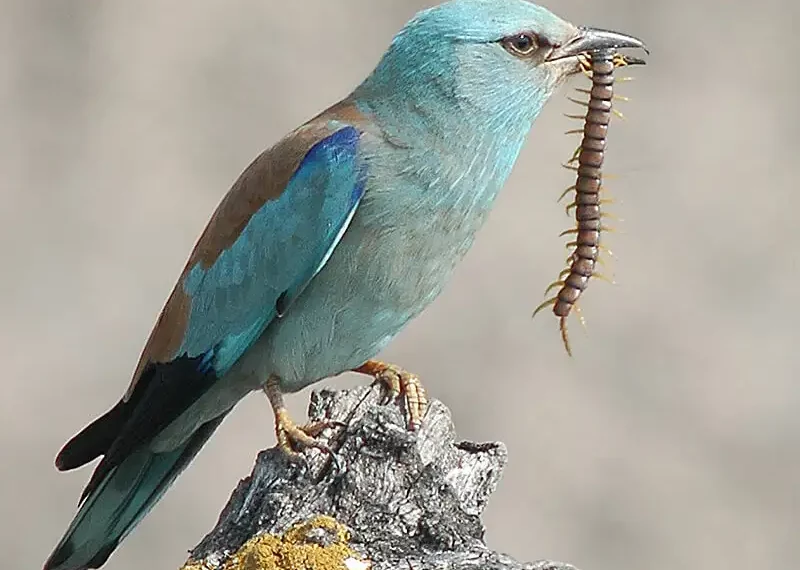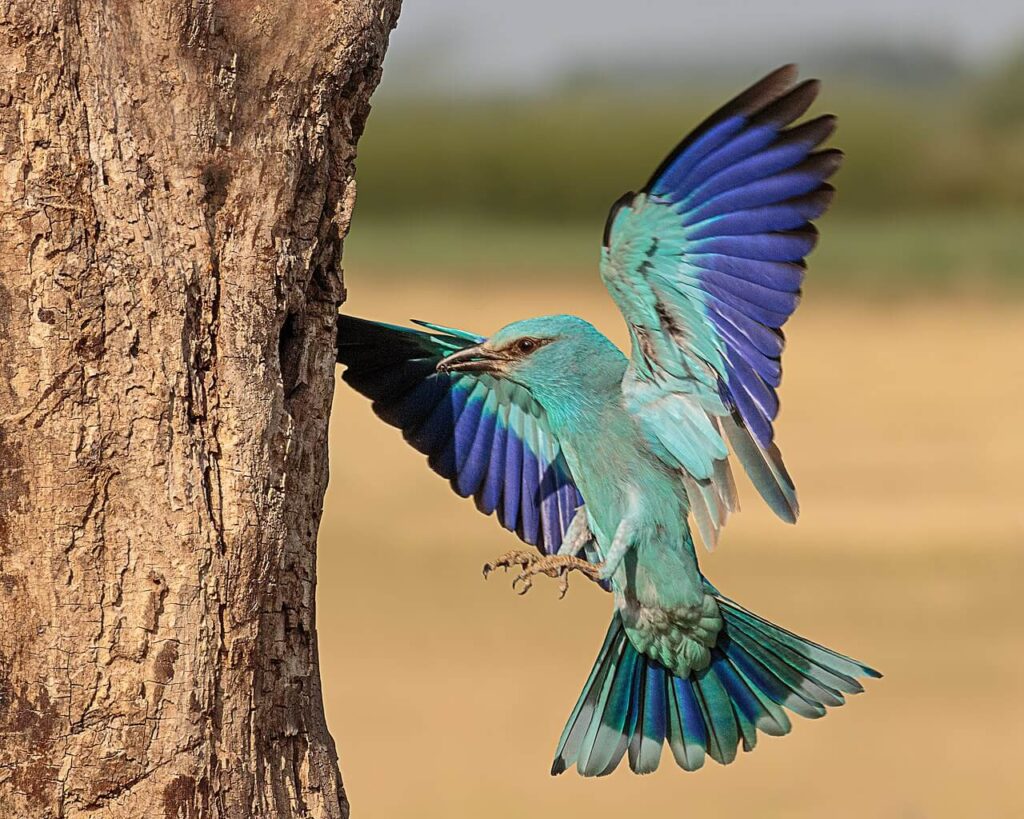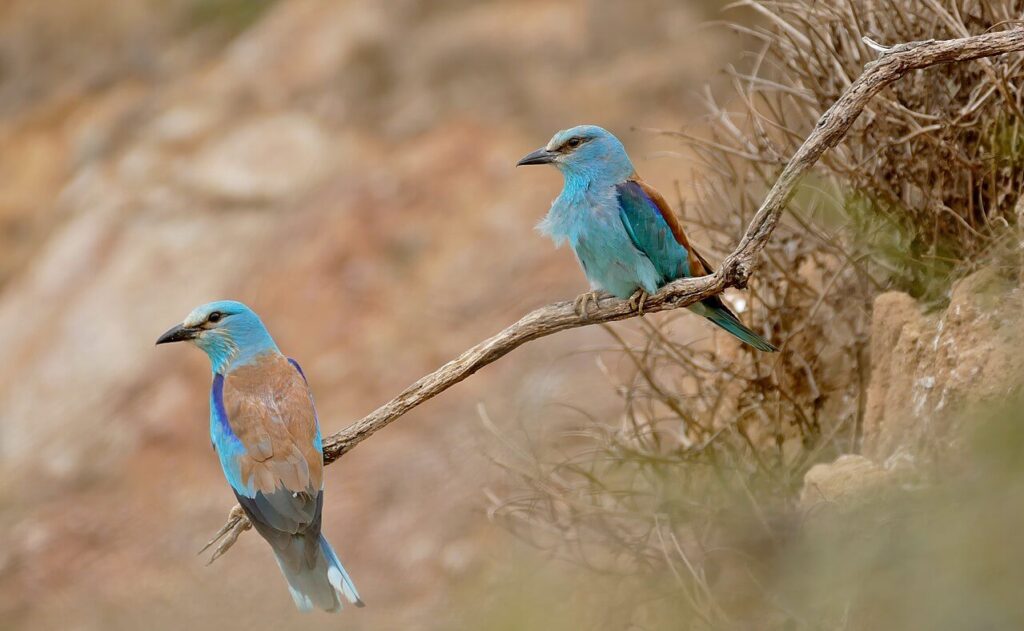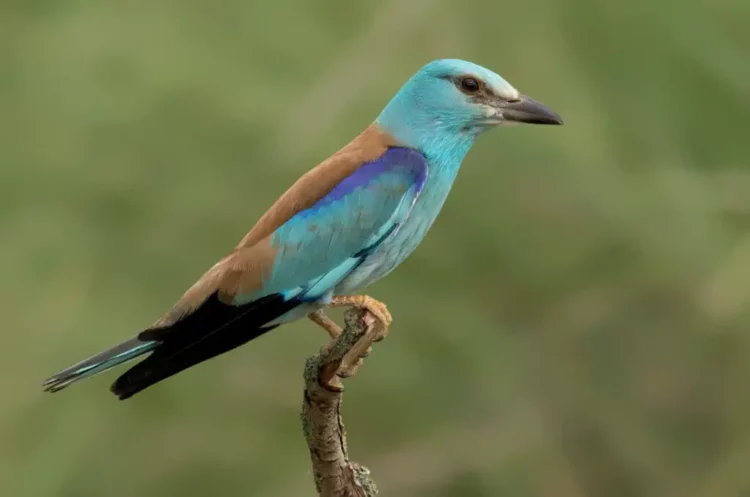The European Roller: A Visually Striking Bird
The European roller, a vividly colorful bird with its blue and brown plumage, captures the attention of bird enthusiasts across Europe and beyond. This eye-catching species is known for its distinct song, a loud and raucous call that sets it apart. As a migratory bird with a varied diet, the European roller offers a fascinating glimpse into the avian world.
Habitat and Taxonomy Belonging to the order Coraciiformes and the family Coraciidae, the European roller, scientifically named Coracias garrulus, is one of only two genera within its family. The other genus, Eurystomus, contains four species. This article delves into the complete description of this remarkable bird, shedding light on its behavior and natural habitat.

Geographic Range The European roller can be found across a diverse range of regions, including Europe, parts of sub-Saharan Africa, the northwestern areas, and central Asia. It prefers temperate and warm environments with trees, generally inhabiting altitudes of up to 2400 meters above sea level. Breeding occurs in open lowlands and steppes.
Distinctive Characteristics Distinguished by its vibrant plumage, the European roller’s blue and brown tones make it a striking spectacle. A combination of bluish and greenish-blue hues graces its head, while a more intense blue shades the rump and scapular feathers. Notably, the tips of its flight feathers are black, creating a striking contrast during flight.

With a length of around 12 to 13 inches and a wingspan ranging from 26 to 29 inches, the European roller is considered a medium-sized bird. Robust in build, it boasts a large head, a strong black bill, and yellow legs. While sexual dimorphism is absent, studies reveal differences in plumage color intensity between males and females.
Subspecies Two distinct subspecies of the European roller exist:
- Coracias garrulus garrulus garrulus, the nominal species.
- Coracias garrulus semenowi.
Vocalizations The European roller’s vocalizations are unmistakable – a loud and noisy “rak cra” song. These calls serve various purposes, including courtship, signaling danger, and interactions with other species.
Diet and Foraging As an omnivorous bird, the European roller adopts a versatile and opportunistic feeding approach, influenced by environmental food availability. Its diet encompasses an array of insects, invertebrates, small vertebrates, fruits, and even carrion. From butterflies and grasshoppers to lizards and amphibians, this bird exploits a diverse range of prey.

Foraging primarily during the day and at dusk, the European roller employs different hunting methods, such as spotting prey from perches and capturing it on the ground or in flight. Rain is also opportunistically utilized for locating earthworms.
Reproduction and Parental Care European rollers exhibit monogamy, although some alternative reproductive behaviors have been observed. Nesting sites are chosen and marked through characteristic flights, with both males and females participating. Nests are typically holes in natural cliffs, anthropogenic structures, or trees.
Clutches comprise 3 to 7 eggs, and parental care is shared by both sexes. Incubation lasts around 17 to 20 days, and the hatchlings, initially born blind, are cared for by their parents. Youngsters develop rapidly, gaining full independence around 26 to 27 days after birth.
Conservation Status The European roller is currently categorized as “Least Concern” by the International Union for Conservation of Nature (IUCN), although certain populations exhibit declining numbers. The bird faces threats like habitat loss, pesticide use affecting its food sources, and illegal hunting in specific regions. While not globally endangered, concerted conservation efforts may be required to ensure its survival in certain localities.
In conclusion, the European roller stands as a vibrant and captivating species, defined by its colorful appearance, unique song, and nurturing parental instincts. While its global population isn’t critically threatened, the species faces localized challenges that warrant attention to ensure its enduring presence in the natural world.





















